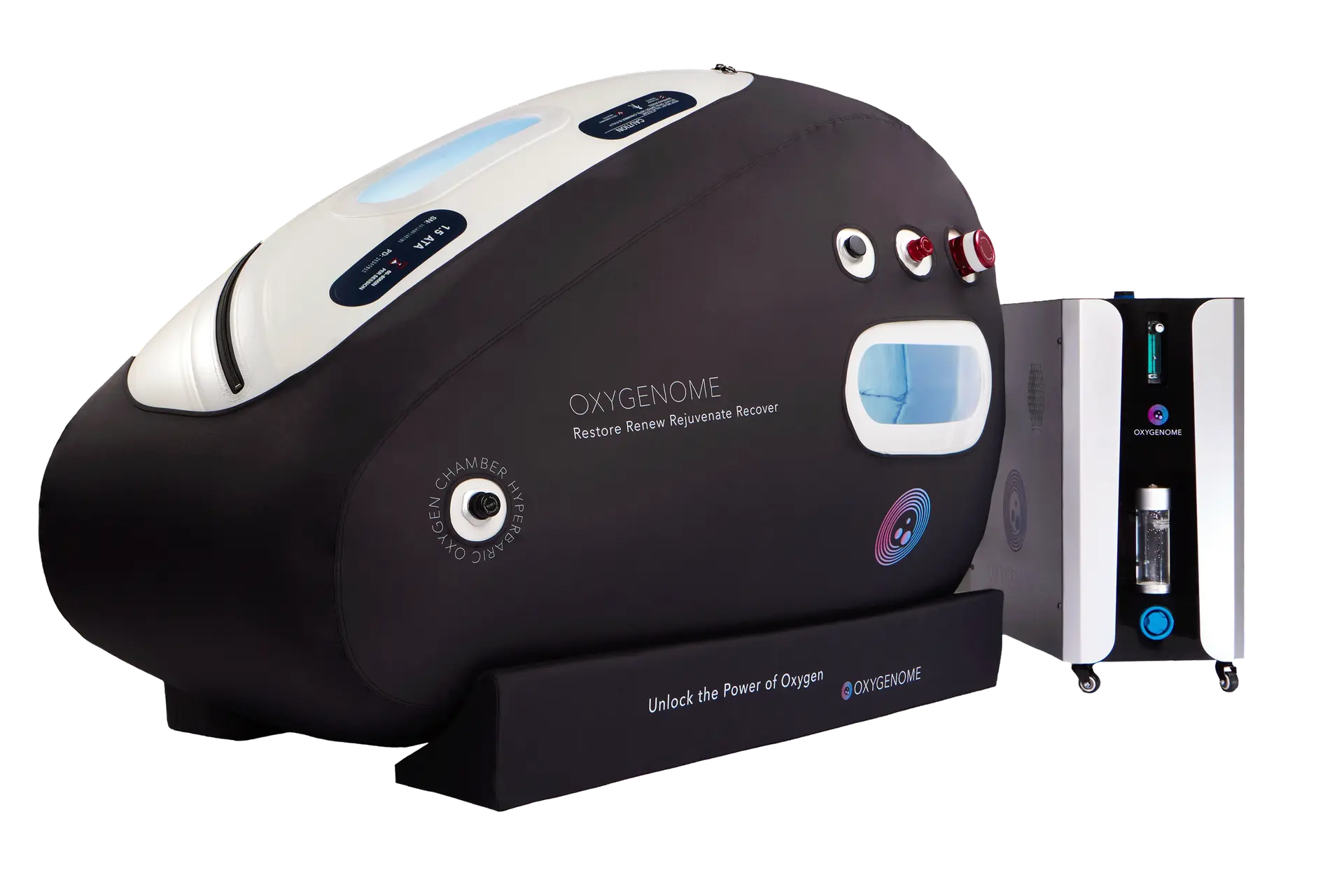Hyperbaric Oxygen Therapy (HBOT) involves a patient breathing air or varying amounts of oxygen within a pressurized chamber, where the pressure is above 1 atmosphere.
The healing power of oxygen is not something new. The use of hyperbaric therapy dates back nearly 350 years. The very first hyperbaric chamber was created in 1662. Clinical applications of HBOT began emerging in the mid-1800s, and by the 1960s, research had demonstrated its broad range of benefits. Today, hyperbaric oxygen therapy is internationally approved for over 150 conditions, proving its effectiveness in various medical and wellness applications.

Traditional Uses
Modern Applications

Hyperbaric Oxygen Therapy (HBOT) involves breathing air or a controlled concentration of oxygen within a pressurized chamber, where the pressure exceeds 1 atmosphere.
The therapeutic potential of oxygen has been recognized for centuries. The concept of hyperbaric therapy dates back nearly 350 years, with the first hyperbaric chamber created in 1662. Clinical applications of HBOT began emerging in the mid-1800s, and by the 1960s, research had demonstrated its broad range of benefits. Today, hyperbaric oxygen therapy is internationally approved for over 150 conditions, proving its effectiveness in various medical and wellness applications.
Historically, HBOT has been utilized for conditions such as diabetic foot ulcers, air and gas embolism, carbon monoxide poisoning, smoke inhalation, gas gangrene, thermal burns, decompression sickness, and acute mountain sickness.
Today, its applications have expanded to support the management of diabetes, fatigue, Lyme disease, cerebral palsy, traumatic brain injuries, multiple sclerosis, ALS, anemia, wound and scar healing, stroke recovery, post-surgical healing, enhanced athletic performance, autism, dementia, and Bell’s palsy, among many others.
At Oxygenome, we offer therapy sessions through in-home hyperbaric chambers for individuals and offer solutions for businesses allowing them to provide this therapy to their customers or patients. Contact us to discover how HBOT can benefit you.
Mild Hyperbarics therapy is a safe alternative to many medical options available to patients today. Some hyperbaric patients may report some mild ear pressure discomfort. This discomfort is similar to the pressure felt when ascending or descending in an airplane. Discuss these concerns with your physician and hyperbaric therapy professional.
Oxygenome provides a safe, comfortable and welcoming environment for your hyperbaric therapy needs. We have hard and soft sided chambers and offer mild pressure only.
Our in-home HBOT therapy chambers offer you the benefits of oxygen therapy right in your home. Our chambers offer you all the benefits of HBOT therapy without the hassle and emotional distress that oftentimes come with traveling and being in medical environments.
Yes, HBOT is safe for children when properly administered. Many children receive HBOT for various conditions, and studies have shown it to be well-tolerated. However, therapy protocols may need to be adjusted based on the child’s age and specific needs.
It is not generally advised to undergo hyperbaric therapy if you are pregnant. Some people feel that there is benefit, quoting research done in Russia. However, until further safety studies are performed, it is not advisable to be inside a hyperbaric chamber during pregnancy.
Many studies have reported HBOT to produce a strong pain relieving effect after just 5 to 10 sessions. HBOT’s effects on promoting new blood vessel formation (angiogenesis) can take place in just 10 to 20 sessions. From our data, here is a general summary:
1-5 sessions: Improve cellular energy and during this time tissue functioning may be optimized. Those with residual carbon monoxide (ie smokers) or with mild anemia can show immediate benefits with cellular energy. Inflammatory markers can go down considerably and mark the beginning of a natural repair process.
5-10 sessions: Typically used for acute injuries with soft tissue damage, particularly if there is pain involved.
10-20 sessions: More serious acute injuries or chronic injuries
20-40 sessions: Commonly used for major tissue damages and when new tissue is required (through HBOT’s regenerative stem cell properties)
No. Most research studies typically use 60 – 90 minute sessions and the majority have reported positive benefits. However, shorter duration sessions (i.e. 20 to 30 min) are getting great feedback from clients undergoing HBOT. Moreover, the lower pressures seem to fare better with this shorter duration protocol. Ultimately it depends on the age of the patient and severity of the condition.
Every person is different and some will see immediate benefits and others may not notice them at all until completion of their series of hyperbaric sessions. In terms of the ’40 hour protocol’, it is not uncommon for the majority of the benefits to be reported up to 4 weeks following its completion!
During a session, you’ll lie comfortably in the chamber while breathing normally. You might feel a slight pressure in your ears, similar to being in an airplane, as the chamber pressurizes.